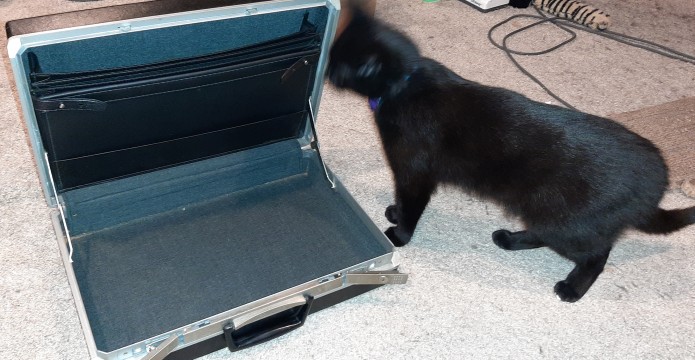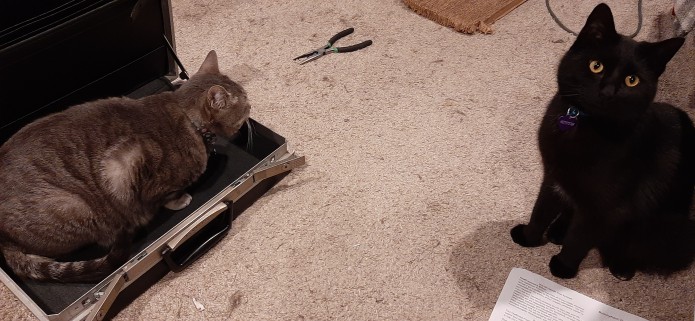The funniest Italian-Iranian pro-life right wing comedian you’ll probably see today:
The rewards for April, 2023, have been released. They include:
Document: *Partial* Martin report on the M329 Mach 2 jet seaplane bomber
Document: “Flexible Wing Manned Test Vehicle, Final Program Report,” Ryan, December 1961. report on the development of the “Rogallo Wing” test vehicle.
Document: “10 Jahre TKF/J-90 Vorentwicklung,” conference paper from 1983 from Messerschmitt-Bolkow-Blohm Gmbh describing (in German) the development of advanced fighter jets
Large Format: “NASA’s Space Launch System,” poster with detailed diagrams of the Block 1 and Block 1B SLS
CAD Diagram: B-1B weapons loads. This diagram was created and intended for my “US Supersonic Bomber Projects Volume 1” but had to be cut for space reasons. This includes gravity bombers, cruise missile sand the Vought T-22 “Assault Breaker.”
If you would like to help fund the acquisition and preservation of such things, along with getting high quality scans for yourself, please consider signing on either for the APR Patreon or the APR Monthly Historical Documents Program. Back issues are available for purchase by patrons and subscribers.
Adam Savage has a bunch of old (decades) silicone molds sitting doing nothing. Silicone, sadly, degrades not just from use, but over time; a mold that is years old will almost certainly fall into ruin if you try to cast a part using it. So, if you have an old mold that you want to get parts out of, what to do? Well, if you are well connected you get someone to CAT scan the mold, create an STL model of the mold, convert the hollow space within into a solid model, then 3D print. Easy! Anybody can do it! But here’s the thing: each scan the CAT scanner makes takes 30 seconds… and each mold could take 1500 scans to complete. So… twelve and a half solid hours on a CAT scanner.
Huh.
The tripod showed up. I do believe it is correct. Compare to the original prop. Here it’s fairly well hidden by the video camera, but the size seems about right in the case:

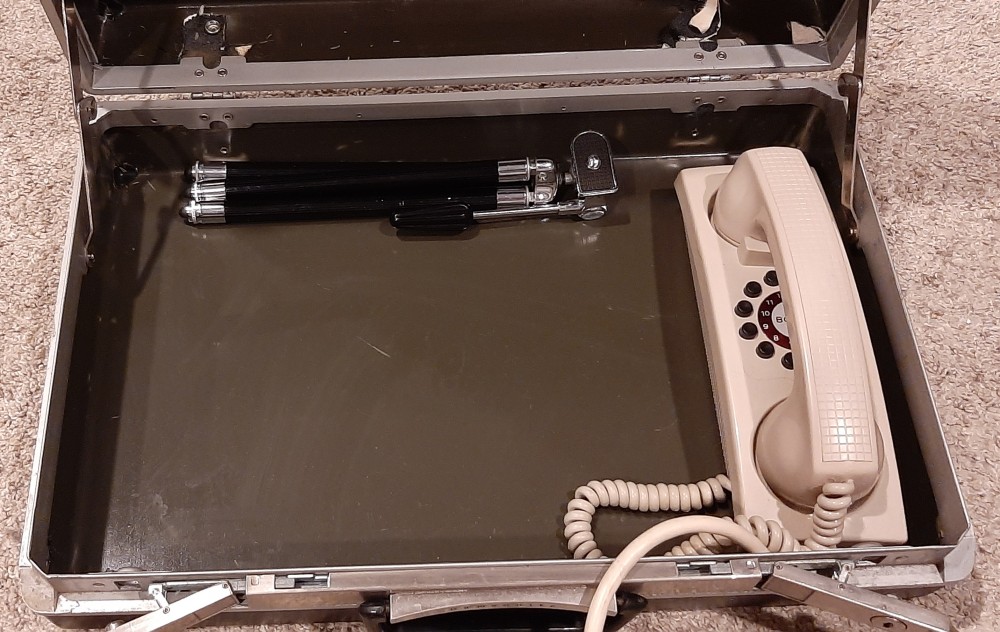
When extended one leg-segment, the top of both the prop tripod and the one on hand are right at the top of the opened briefcase lid.
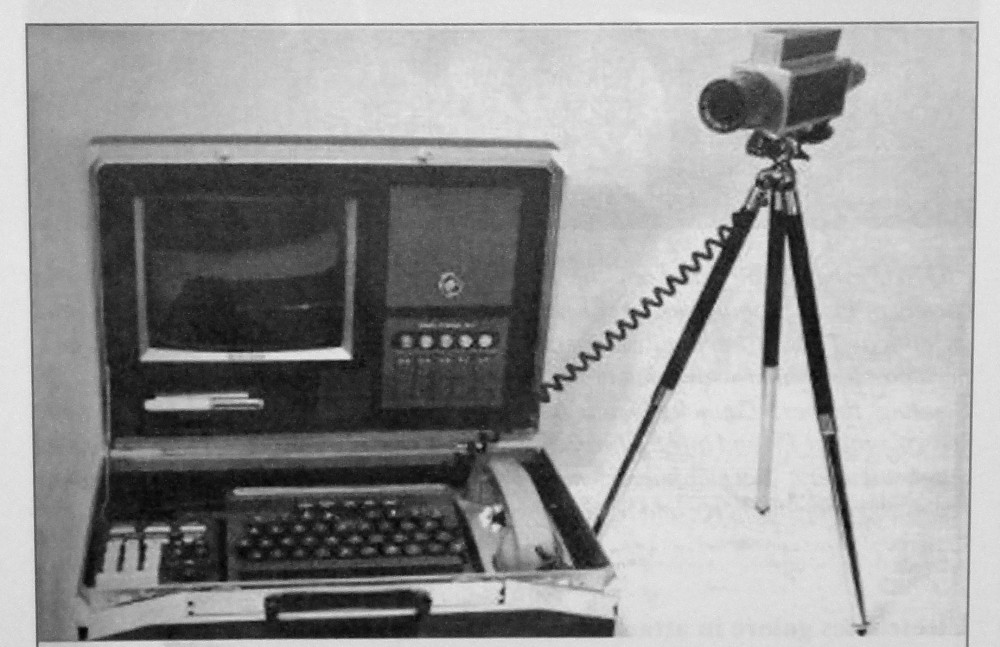
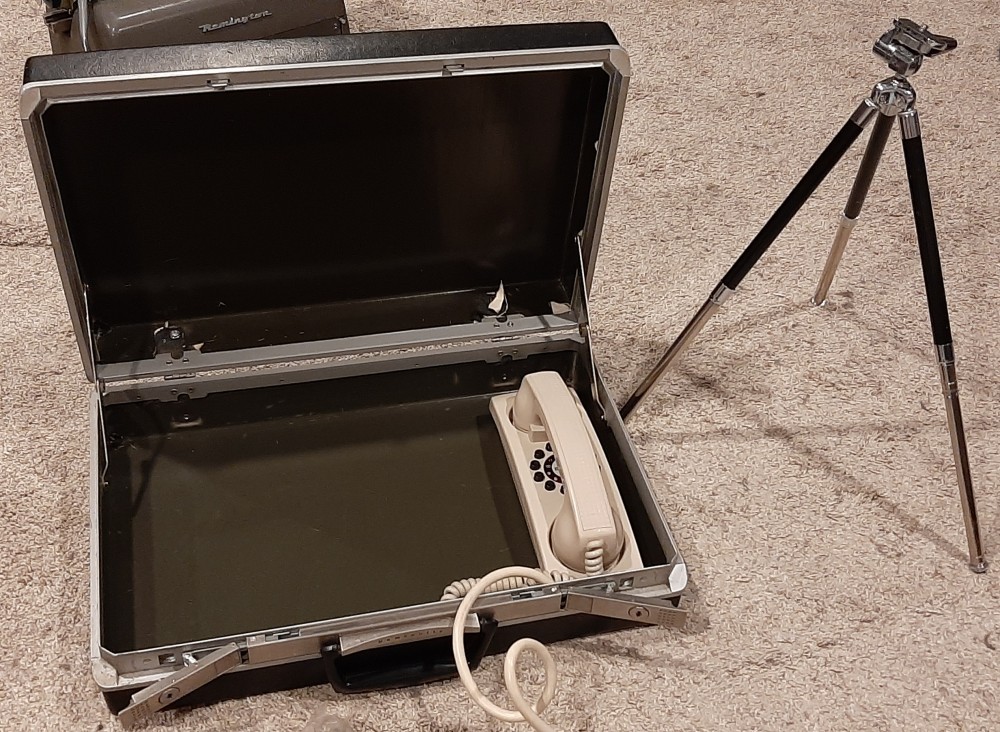
Until I either find out what some of the remaining items are (the rectangular “buttons,” the TV screen, speaker cover, “light pen,” knurled knobs), this seems to exhaust my search for and procurement of vintage artifacts. However, the project proceeds. As can be seen, I’ve mostly removed the interior fabric liner and its card backing; that was some tough stuff. The boxes for the keyboard and the numeric/math board will be fabricated; this can be done pretty accurately given that I have the keys and fairly clear photos. The long space bar is going to be a challenge… the typewriter I have has one, and it’s in great shape… but removing it requires undoing some screws that I just can’t reach without an extensive disassembly of the typewriter. Instead, I think I can *just* manage to make a silicone mold of it in place and cast a copy right there.
Note also in the color photo of the prop: the keyboard is off-kilter. It looks like the bits and pieces were just placed into the case and not fixed down in any fashion. My replica will be different: the boxes and the phone will be designed to attach to a fiberglass board that fills the back of the case. There will also be something to attach the camera and the tripod to keep them from flopping around inside the case. Also note… there are no wires connecting the TV screen and memory components in the lid to the keyboard, phone and camera in the base. I suspect this was just a way to keep things neater for the prop (or even an oversight), but I would not put it past the prop people, or even Kubrick, to have made the decision to not have wires. Instead there might have been microwave, laser or radio links between the components. More complex, and needlessly so… but this was a world in which businessmen went to space stations to buy bush babies over the videophone and signed contracts on the moon with atomic-powered pens. So a laptop where the top and bottom communicated via Wifi rather than wires does not seem out of place.
I listened to part of an NPR piece earlier today on the subject of art forgery and the economics of it. Part of the discussion revolved around a case where a museum had a special display of “art” produced, supposedly, by Jean-Michel Basquiat in the 80’s. If you’ve never heard of Basquiat, there are two things to keep in mind:
1) His paintings have sold for over one Hundred MILLION dollars.
2) His paintings look like this:

Yeah. That’s really what passes for “fine art” these days.
As it turns out, this museum exhibition was populated by *forged* Basquiat paintings, which caused headaches all around.
Anyway, the thing that made me laugh out loud was one of the admissions by one of the forgers: the paintings took less than half an hour to create. According to THIS ARTICLE, some of them as little as five minutes. If you can forge “art” that passes *any* sort of muster in a matter of minutes, I gotta question whether said “art” is worthy of any real mention.
In the NPR piece, the expert they talked to yammered on about how “important” Basquiat was, along with Andy Warhol and Jackson Pollock. There’s yer problem: you think *that* is art worthy of remembrance. But where is your reverence for Chesley Bonestell? Norman Rockwell? Robert McCall? You know, artists with actual skill and talent, producers of art that inspired and uplifted… and demonstrated craftsmanship and ᚠᚢcᚲᛁᚾᚷ effort? Artists you couldn’t create “previously unseen” art from in the time it takes to listen to a mediocre podcast?
This is just a part of the uglification of the world, the exaltation of the mediocre, the banal, the bland.
There are several raised rectangular “buttons” on the briefcase computer prop that appear to be simple beveled rectangles of plexiglass, or cast clear plastic. I’m reasonably certain that I’ve seen these on “instrument panel” props before, typically lighted from behind. I don’t know if they are simple bits of plastic or if they were originally push buttons. Here it looks as if they were simply glued on and unlit, but lighting them from behind would seem appropriate.
They can be recreated via CAD and 3D printing easily enough… probably easier still to simply *make* one by hand. But it’d be good to know exactly what they are.
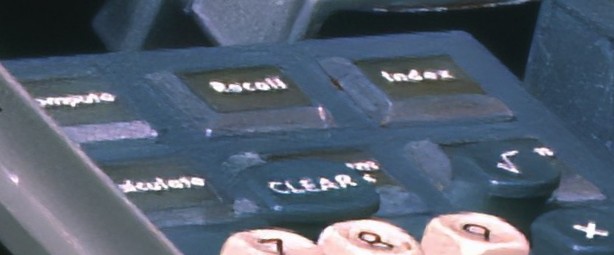
They *kinda* look like the indicator lights on Goldfingers “trick pool table” control panel. Most of these look like simple plexiglas rectangles, but some look like the “laptop” buttons turned upside-down. Shrug.
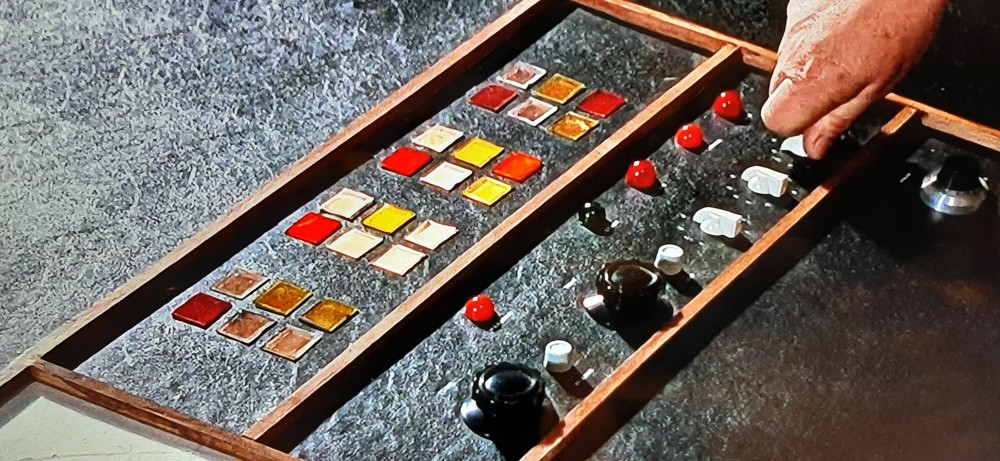
What is this device? It seems to be a light pen for drawing on the briefcase computers screen… but almost certainly was something different. But what? I’m wondering if it was an inspection light. But even in the 1960s there were “pen” flashlights that ran on batteries and didn’t need cords for power. So was this an especially *powerful* light? Or something completely different? It does appear to have a machined aluminum holder for it to clip into.
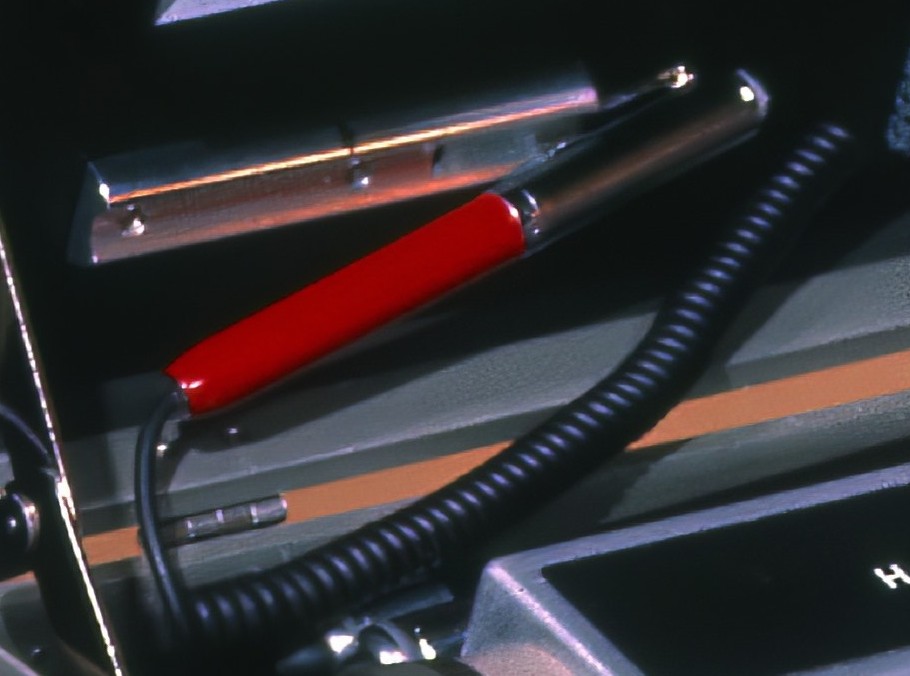
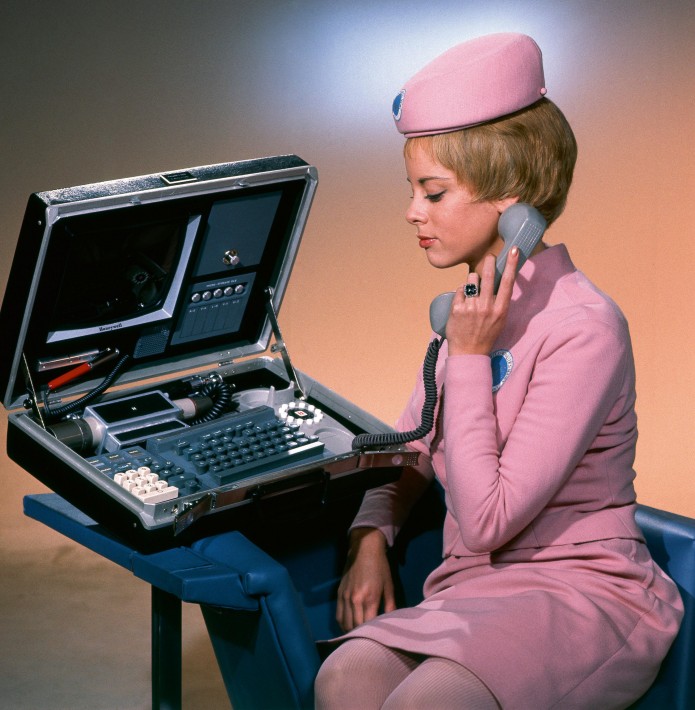
Wow.
Both the phone and the typewriter arrived today. The phone, as can be seen, seems to fit just about perfectly, indicating that the Samsonite briefcase is the correct one (though a number of virtually trivial details are different). The phone has a cord that seems to be pretty permanently attached, but I am loathe to just lop it off. My goal is to keep all the vintage bits as intact as possible, so I’ll either disassemble the phone or go straight to making a silicone mold of it and casting it in fiberglass. I hope to remove only a few keys from the typewriter, assuming I can figure out how to remove them without damaging them, then mold/cast resin copies. Other than a cracked frame the typewriter seems intact and functional. And while there is about zero chance I’ll ever use a typewriter again… I cringe at the idea of wrecking such a nifty bit of functional analog mechanical genius.
The phone and the keys are the wrong color, so casting copies seems to be the correct way to go in any event. This would also open the door for a very limited run “kit” for those vanishingly few who want this. I plan on making the parts out of a combination of cast resin and fiberglass; hand laid up fiberglass cloth components would be strong, light and *hollow,* allowing those with a mind to to install electronics. A functioning keyboard and monitor would be spectacular, though a functional fiberglass phone seems maybe a bit dubious.
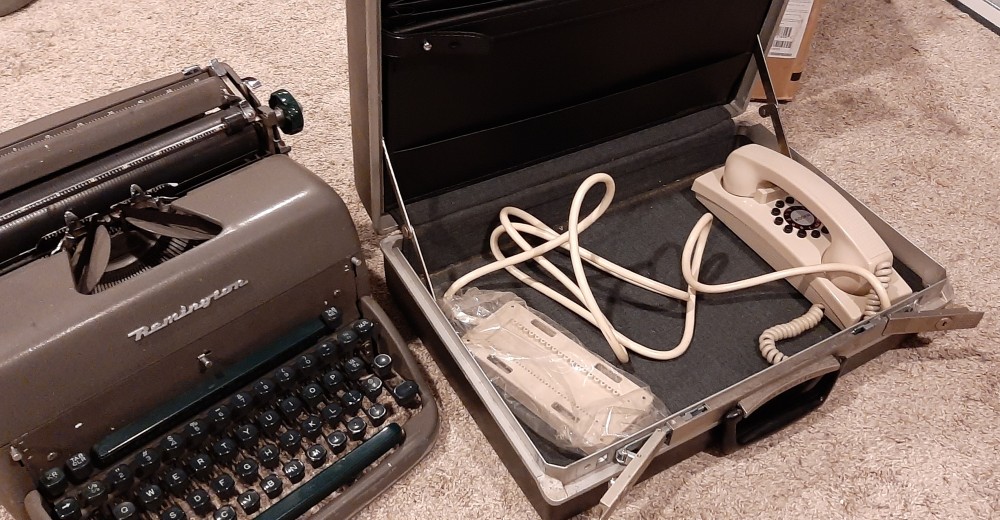
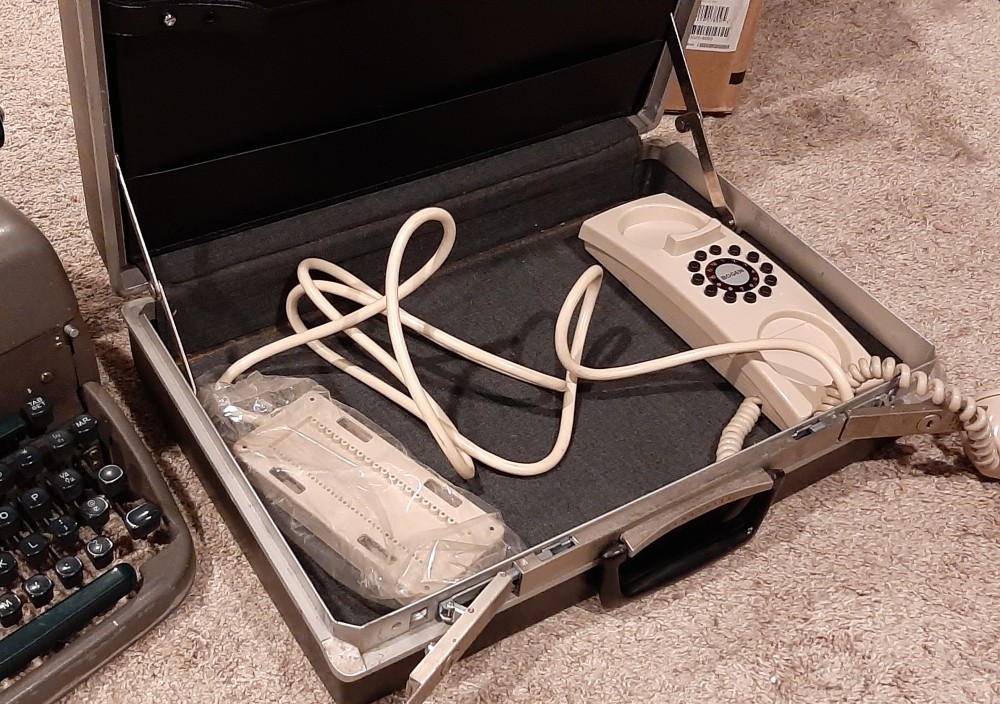

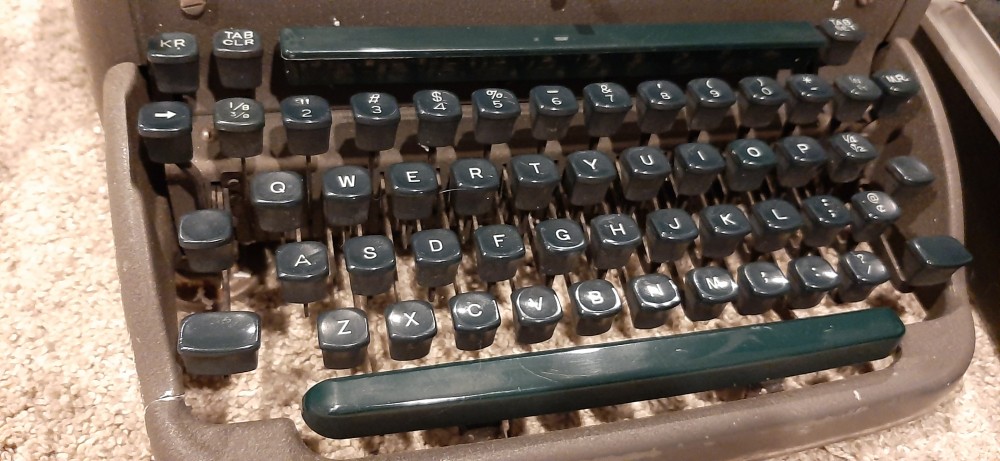
Note the obligatory feline photobomb.
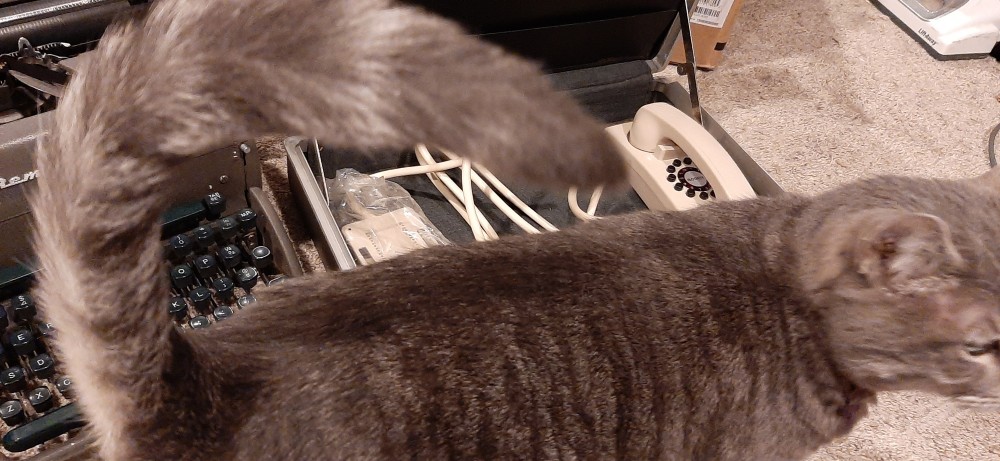
The first artifact has arrived, a Samsonite briefcase. I am *largely* certain that this is the correct case; there are certainly a largish number of them readily available on Ebay. There are some minor differences between this one and the prop, most of the differences explainable as modifications: the key locks have been removed and replaced with featureless aluminum disks/cylinders; the tabs on the prop have concave ends rather than just squared-off ends. There is a small placard affixed to the middle of the briefcase… I can see “Honeywell,” then something that might be numbers, and then “EXECUTIVE.” The interior lining needs to be removed and the whole thing cleaned, the metal polished and the metal base that the handle is fixed to painted black.
And, of course, the current residents evicted. This took about five seconds; it is a box, after all.
I will wait a little bit before launching into a full preparation. The intercom/phone should be the next item to arrive, and if it fits in this case as it should, then I’ll be off to the races. If it doesn’t… well, I’ll need to rethink the case, I guess. Pretty confident, though.
